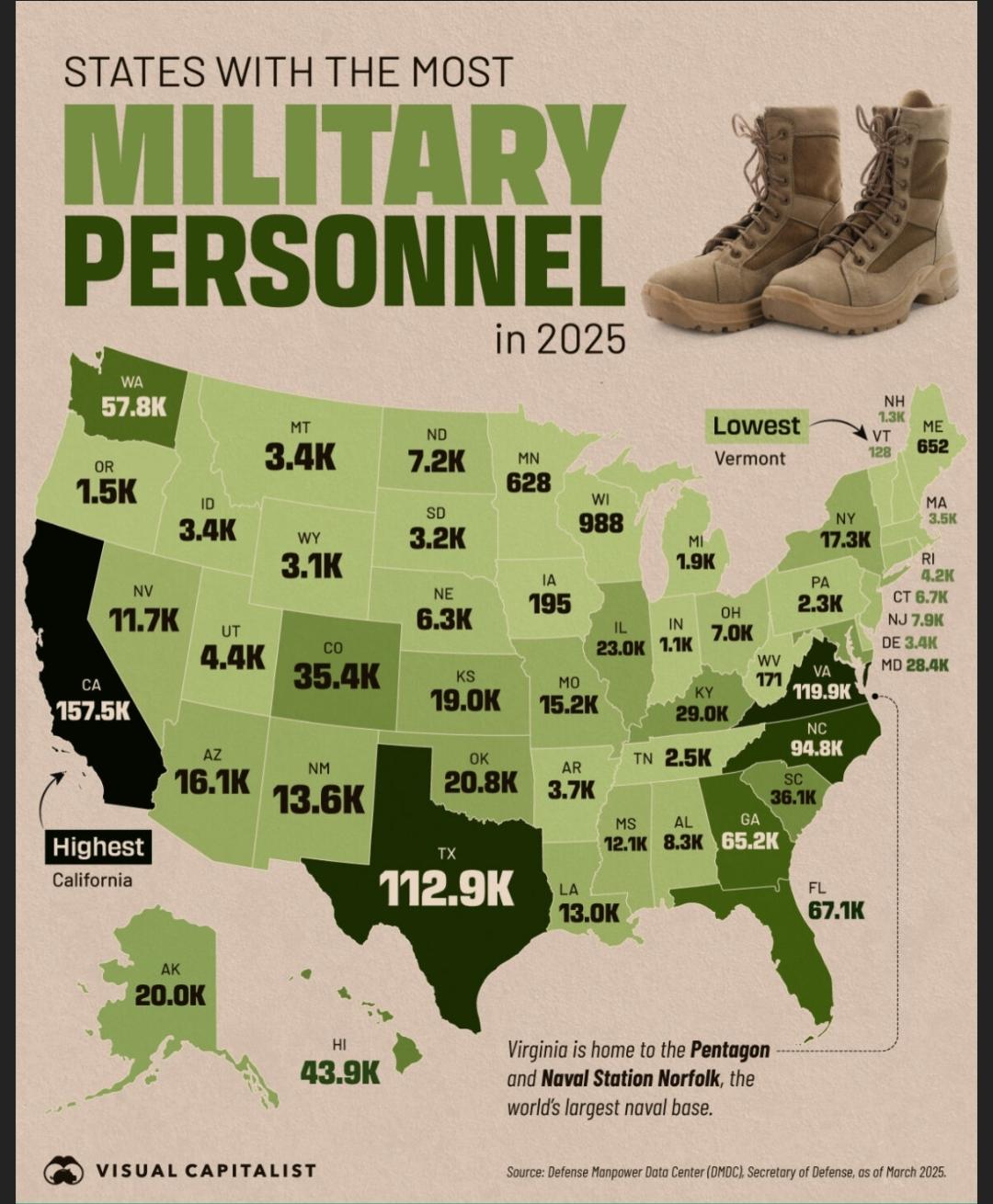Map of States with the Most Military Personnel


Alex Cartwright
Senior Cartographer & GIS Specialist
Alex Cartwright is a renowned cartographer and geographic information systems specialist with over 15 years of experience in spatial analysis and data...
Geographic Analysis
What This Map Shows
This map provides a visual representation of the distribution of military personnel across the United States. By illustrating the number of active duty and reserve military personnel state by state, it highlights not only where the largest concentrations of military forces are located, but also the underlying factors contributing to these distributions. As we delve deeper into the topic of military presence in the U.S., we can uncover the connections between geography, military infrastructure, and state demographics.
Deep Dive into Military Personnel Distribution
When we think about military personnel, several key factors come into play. The numbers reflect not just the size of the military installations in various states, but also the historical significance and strategic importance of these areas. For instance, states with large military bases often have higher concentrations of service members due to training, deployment, and operational needs.
Interestingly, states like California and Texas consistently rank at the top of the list when it comes to military personnel. California, home to several major naval bases and the Army's Fort Irwin, boasts a significant number of active service members. Texas follows closely, with installations such as Fort Hood and Joint Base San Antonio contributing to its military population.
What’s fascinating is that military personnel counts can also reflect economic and social dynamics. Regions that house large military bases often benefit from a booming local economy due to defense contracts and the influx of civilian jobs that support military operations. However, they also face unique challenges, such as the need for adequate housing and services for military families.
Beyond just numbers, the distribution of military personnel can tell us about the strategic military considerations of the U.S. For example, states located near the coastlines or international borders tend to have a higher military presence due to their critical role in national defense. This is evident in states like Virginia, which is home to the Norfolk Naval Base, the largest naval base in the world.
Furthermore, the geographical landscape can influence the type of military operations conducted in certain regions. For example, states with expansive training grounds, like New Mexico and Arizona, are ideal for desert warfare training, while mountainous states like Colorado are suited for high-altitude training exercises.
Regional Analysis
Examining the map in terms of regional variations, we see distinct patterns emerge. The Southeastern U.S. is particularly notable for its high military presence, with states like Georgia and Florida hosting large installations such as Fort Benning and Eglin Air Force Base. This region's warm climate and extensive training areas make it ideal for year-round military training exercises.
In contrast, the Northeast, while home to fewer military personnel overall, plays a vital role in strategic military planning. States like Massachusetts and New York house important facilities, such as the Massachusetts Military Reservation and various National Guard units, contributing to a different type of military landscape focused on readiness and rapid response.
Meanwhile, the Midwest may not have the largest concentrations of military personnel, but it is home to many strategic air bases and logistical hubs. Bases like Wright-Patterson Air Force Base in Ohio serve critical roles in technology and research, impacting military strategy at a national level.
Significance and Impact
Understanding the distribution of military personnel is crucial for several reasons. Firstly, it sheds light on how states contribute to national security and defense readiness. With geopolitical tensions rising in various parts of the world, having military forces strategically positioned across the country becomes increasingly important.
Moreover, the presence of military personnel can significantly affect local economies and community dynamics. Many towns and cities thrive due to their proximity to military bases, benefiting from the economic boost that comes with military contracts, housing demands, and local spending by service members and their families.
Looking ahead, trends suggest that the distribution of military personnel may shift in response to various factors such as defense priorities, budget changes, and evolving military strategies. As technology advances, we might see a greater emphasis on cyber warfare and less reliance on traditional troop deployments, potentially influencing where personnel are stationed in the future.
In summary, the map of states with the most military personnel is not just a collection of numbers; it encapsulates a complex interplay of geography, history, and strategy that shapes both military operations and local communities. Understanding this landscape can provide valuable insights into the current state of national defense and the ongoing evolution of military strategy in the United States.
Visualization Details
- Published
- October 18, 2025
- Views
- 38
Comments
Loading comments...